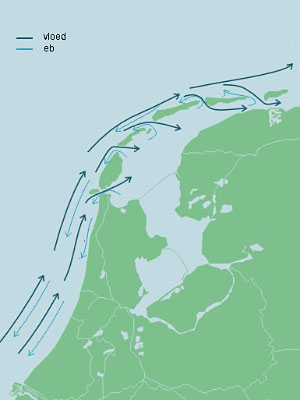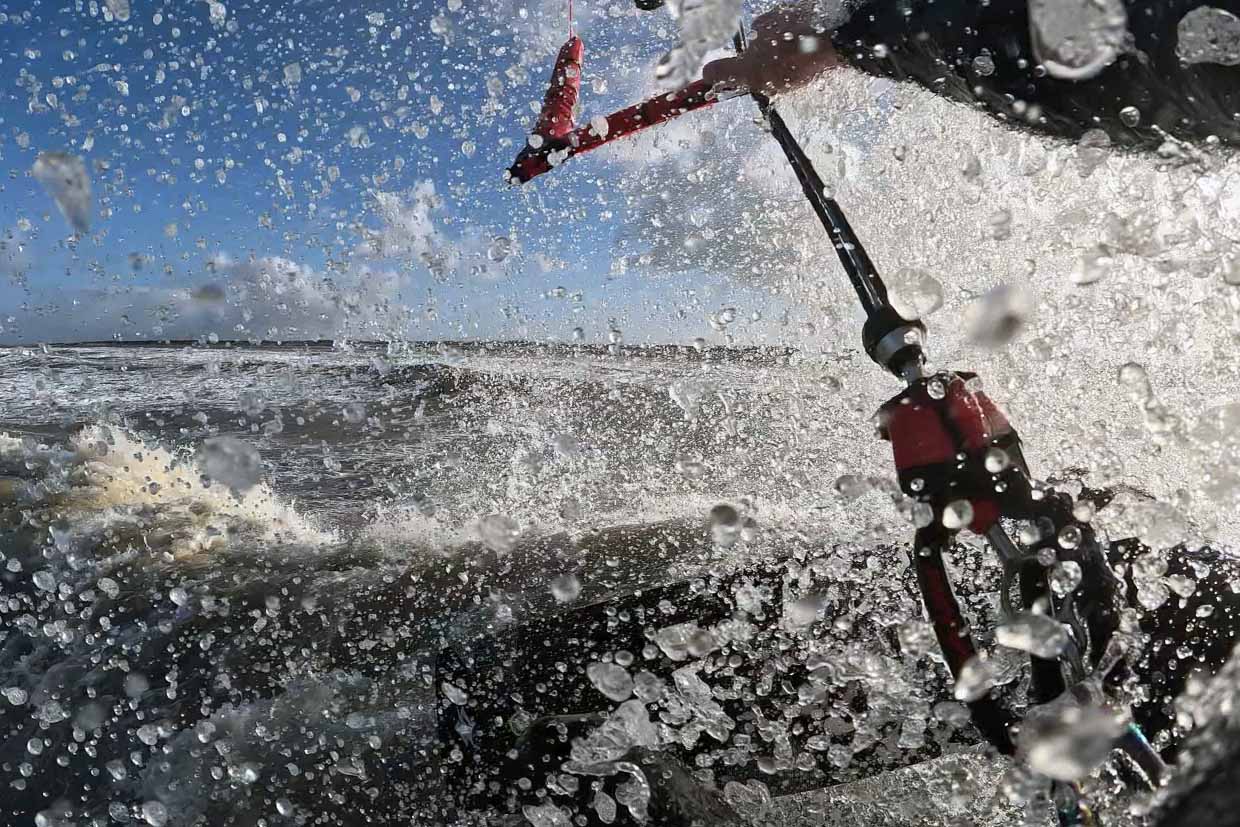Estimated reading time: 4 minutes
KSurfing at sea in the Netherlands means defying the North Sea. And our beautiful North Sea brings us kite surfers a lot of fun and challenge. Dealing with ebb and flow, the process that initiates currents, is part of this. Currents are always important to keep an eye on. In moderate to fairly strong winds (between approximately 12 and 19 knots), the current speed can even make or break your kitesurfing session. You can read how that works in this kitesurfing blog. You take advantage of it.
Current that your kitesurfing session makes: current against the wind
Situation 1. The current wind force is perfect for kitesurfing: a stable moderate to fairly strong wind force. Once at the coast, this image is confirmed. The wind is good 'on'. Once on the water you feel the pressure in your kite very well and you side your kiteboard extra well in the water. You walk remarkably easy (coming back where you came from).
Current your kitesurfing session creaks: current downwind
Situation 2. The current wind force is perfect for kitesurfing: a stable moderate to fairly strong wind force. Once at the coast, this image is confirmed. The wind is good 'on'. Once on the water you have hardly any pressure in your kite and you can hardly walk up to altitude (come back where you came from).
North Sea tidal current speed
As the situations describe, tidal currents on the North Sea can really make or break your kitesurfing session. The force of current is easily 1 meter per second (about 2 knots). In moderate to fairly strong winds, this can make all the difference. If the current is with the wind, you will suffer from it. If the current is against the wind, you will benefit from it.

Now that you know this about the impact of currents on your kitesurfing session, you know that in moderate to fairly strong winds it is important to adjust your session to the tide. Tides are indicated with tide tables. Especially for spots that are known for their current, it is important to take current into account.
Least tidal current 3 hours after high tide
You have to do as little as possible with current in the period 3 hours after high tide and when the water starts to drop towards low tide. There is then no current for 1 hour, after which the ebb current starts, which is half as strong as the flood current.
Current and tide charts are available. See this one, for example very detailed of Scheveningen and surroundings, the tides in the weather maps and via Rijkswaterstaat.
Pay attention! Some kitesurf spots have special features in terms of sandbanks, coves, piers, etc. in the area. Therefore, tidal currents can be very local on the coast.
North Sea current: that's how it works

ZAs can be seen in the picture, the tide creates tidal currents in the water in the North Sea. This tidal current arises from the ebb current and the flood current from the Atlantic Ocean. The current flows from the south into the North Sea via the canal. From the north, the Atlantic ocean water flows into the water via the Scottish coast. The water flows out of the North Sea along the Norwegian coast. Ebb and flood flows thus flow along the coast and kitesurf spots. The most dominant is the flood current, which moves the most water. That is why the water along the Dutch kitesurf spots mainly flows from southwest to northeast.
Ebb and flow details per kitespot
However, there are (major) differences in the tidal cycle per location. For example, in Den Helder the ebb current flows faster than the flood current. This means that the current is stronger during the ebb tide. In Noordwijk this is the other way around. There the flood current flows faster than the ebb current. In Ouddorp the duration of the flood current is almost equal to the ebb current. It's all different in the mudflats because the water there literally comes through the gaps between the mudflats. This creates its own dynamic. Read more about ocean currents on rescuebrigade.nl.







The article states that 1 m/s is equal to 4 knots, that is not correct.
1 m/s = 3,6 km/h ≈ 2 knots.
Good point Sybren, thank you. I changed it. We meant about 4 miles per hour, but you're more precise.
That's what I thought, I thought it was a useful and nice article.
Dear kitesurf pro, do not completely agree with the text "Current against wind makes the session". This just gives the crap.. So the most beautiful is, for example, Wijk aan Zee with SW wind in combination with high tide. Nice long waves. Only a little more difficult to sail upwind. Vrgr Rudolf
Hi Rudolf, Good addition regarding the wind waves downwind rather than upwind which can cause a slosh. Thank you. The blog is about wind where you can or cannot kitesurf. Then the luxury of difficult upwind sailing when the wind goes with the current is often not present and we will sometimes have to make do with a mess.